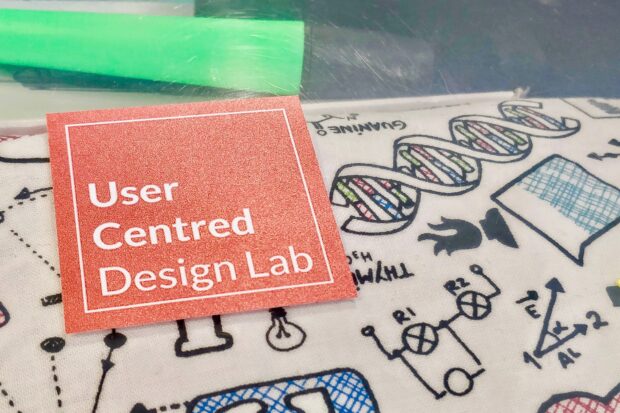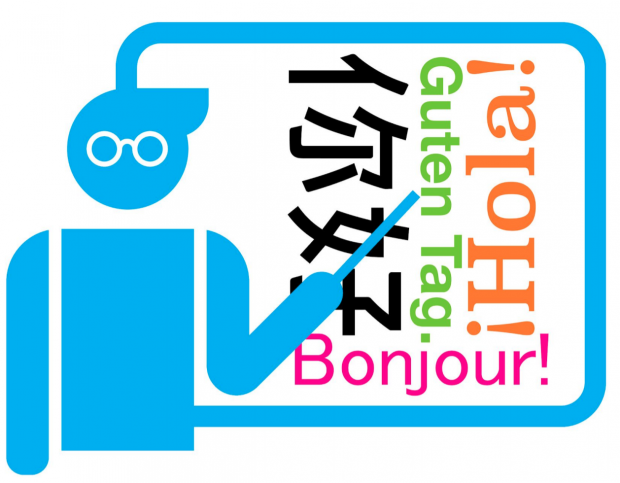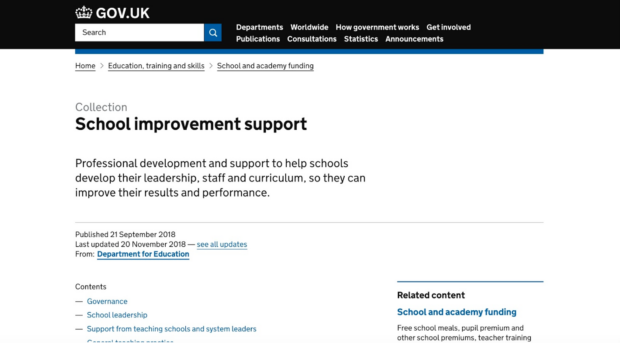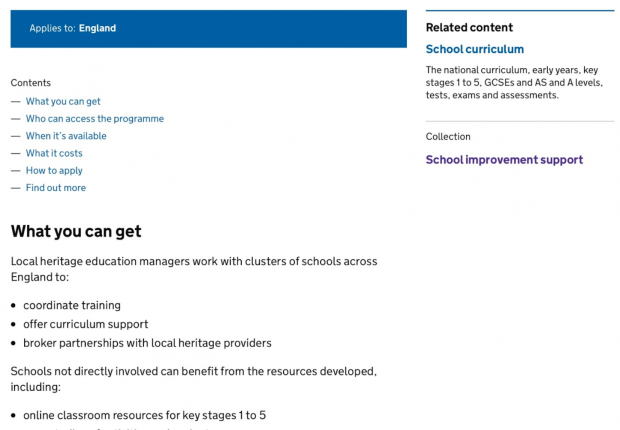
Although we've mentioned the User Centred Design Lab in previous posts, we've not been very clear about what it has done, and how it has worked. In this post, we'll talk about both.
Civil servants who understand digital ways of working
The lab is a team of people who help colleagues across DfE to be user-centred. Lab people have a particular mix of skills and experience that makes them good at doing this. Specifically, they:
- have direct experience of delivering services for schools
- understand the education policy background
- know about digital working methods, and implementing the service standard
As Emma Stace, DfE’s Chief Digital Officer, said in her post a few weeks ago, the lab specialises in helping DfE colleagues make the shift from writing policy to designing policy. These policy decisions are then based on user research, data, and learning from real circumstances in the real world.
Some of you might have read articles about bringing policy and delivery closer together, or our own James Reeve arguing that they should be the same thing. That’s precisely what the lab team are here to do.
Helping teams do user-centred policy design
Lab members work directly with teams across DfE. Sometimes just for a few days, or sometimes embedded within those teams for weeks or months at a time. It gives teams as much help as they need, and as much as they ask for - without taking over.
The lab team members speak two languages. These are:
- the language of educational policymaking and delivery
- the language of user-centred design
They understand both sides of the equation.
Lab members can talk confidently about DfE and the work it needs to do. They can also talk confidently about service design to meet user needs, iteration, user research, and making use of the tools others provide to make service delivery easier.
They’re well qualified, credible advisors for colleagues who don’t know as much about those things yet. Perhaps the best way to understand how the lab works is to look at a couple of examples of things it's done.
Improving uptake of modern foreign languages at GCSE

Some years ago, all pupils had to study a modern foreign language until they were 16. But when studying a foreign language was no longer obligatory the number of pupils who chose to study a language fell. The government wanted to boost these numbers. There's now an ambition for 75% of GCSE students to study a language by 2022 as part of the English Baccalaureate.
The lab helped the policy leads set up a team to design policies to boost uptake. Rather than writing a policy for schools to follow, the lab designed a policy based on user research in schools. In particular, they wanted to test an idea - technology could play a role in encouraging more students to study foreign languages at GCSE.
With help from the lab, the modern foreign languages policy team ran a 6-week discovery. It focused on user research interviews with students, parents, teachers, headteachers, and heads of language departments.
The discovery uncovered 2 things. Firstly, students wanted to hear from people who'd studied foreign languages, and they were open to hearing how the subject had expanded their career opportunities.
The second thing we learned is that technology can help reduce foreign language teachers' workload. For example, tech can be used to give instant feedback to pupils. This could perhaps encourage more pupils to take up foreign languages.
The team will start testing how to connect university level foreign language students with their younger counterparts who are about to choose GCSEs. We’ll have more to say about that once this alpha phase is complete.
Improving funding content for schools on GOV.UK
Another lab project looked at the way schools apply for funding for school improvement. Money and support was available to under-performing schools, but applying for it and receiving it had been a long and complicated process.
Again, people from the lab worked with policy experts to investigate further.
After interviewing a number of people working in schools, it emerged that one problem was simply a lack of clarity. School leaders struggled to find clear and accessible information about the funds available, and how to apply for them.
The team realised that clear, accessible guidance could meet the user need they'd uncovered. So they did some content design and put new guidance in one place on GOV.UK.
The result looked like this:

This clear, structured page was designed to assemble all the relevant information in as simply as possible. It uses the sort of language that school leaders would use. If you google 'school improvement support', this page now comes up as the top result.

In response to user research, we've improved our support content. There are now links to clear, well structured pages under each category. The support content includes eligibility criteria and cost.
User testing shows that school leaders can now easily find the information they need. This saves them valuable time.
Better policy decisions, not just big shiny services
In both of these examples, the end result wasn’t a new digital service but a policy decision. That’s what makes the User Centred Design Lab different. The lab is not just here to make whole new services, but to help teams rethink problems facing schools in a user-centric way. Digital specialists and policymakers are coming together in multidisciplinary teams.
The solutions vary, depending on the user needs, and that’s the whole point. Until you start being user centred, and until you start finding out what those needs are, you can’t predict what the results will be.
We like to judge our success on the answer to a simple question: are we making things better for children, schools and the people who work in them? So far, we think the answer is yes. We’ve learnt a lot in the past 18 months. Now we’re thinking about the future - where can we go from here?
To keep up to date with our work, subscribe to our blog.
Recent Comments